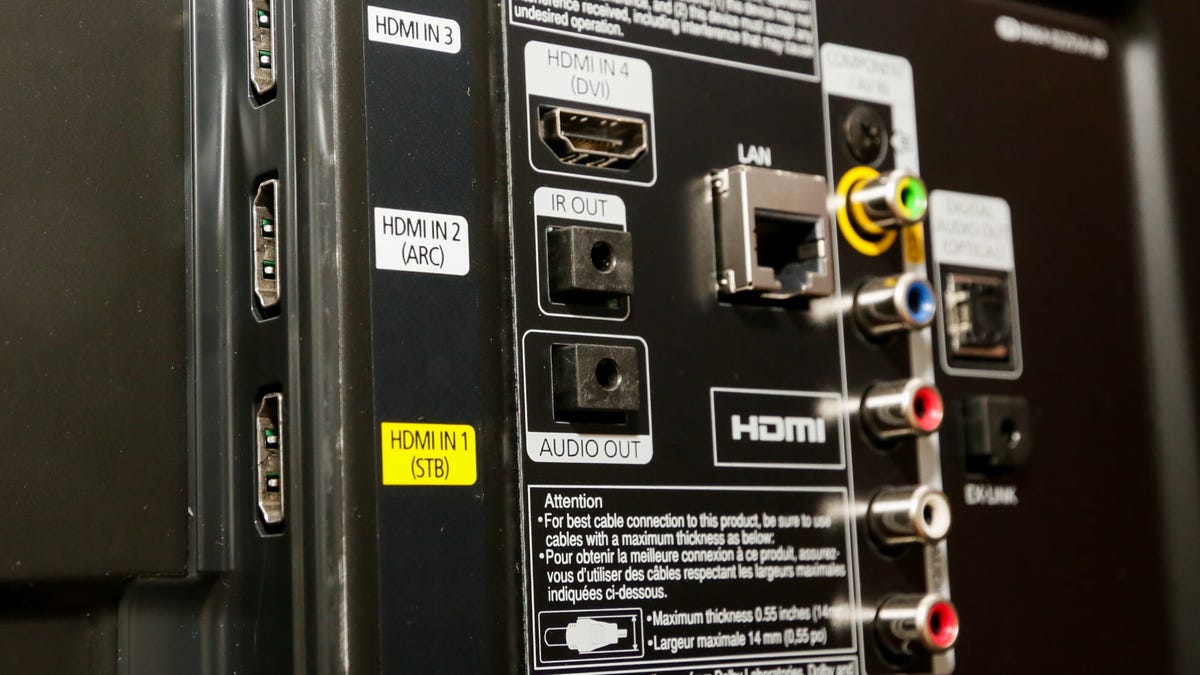 Why You Can Trust CNET
Why You Can Trust CNET What is Audio Return Channel (ARC)?
ARC, or Audio Return Channel, is an HDMI feature, built into many TVs, receivers, and sound bars. It has the potential to simplify setup, but it comes at a potential cost. Here's what you need to know.

Audio Return Channel, or ARC, uses a single HDMI connection to send audio from a TV to the sound bar or AV receiver.
In theory, this could simplify your setup, and reduce the number of cables you need. Unfortunately it's not that simple.
Here are the good -- and bad -- aspects of Audio Return Channel.
The basics
In theory, ARC is supposed to let you have one connection between your TV and whatever you use to create sound: a receiver or a
. You send video to the TV with an HDMI cable, and that same HDMI cable sends audio from the TV back down the same cable.This is great for smart TVs, where the TV itself is creating the audio (via apps like Netflix and Pandora). Instead of suffering through a TV's terrible speakers, the audio gets sent to the receiver/sound bar for a massive improvement in sound quality.
Another way this is great is if you have multiple sources (Blu-ray, cable box, Roku), but only one input on your sound bar. With ARC, you can connect everything to the TV, and the TV will send audio down an HDMI cable to the sound bar. No extra cables needed (i.e. an optical cable).
Lastly, it can allow for one remote to turn on everything in a system. Turn on your TV, your sound bar turns on as well. That's handy.
Except...
It doesn't always work, at least, not perfectly. Turns out, many TV manufacturers haven't implemented ARC to send any and all audio via HDMI. Want to hear 5.1 surround from your receiver? ARC might not let you do it. Many TVs are two-channel (2.0) only via ARC.
So even if you've got a great surround sound movie, and a receiver with 5.1 speakers (or a sound bar with rear speakers), connecting them with ARC might mean you're only going to get audio for the main two speakers.
Some TVs will send 5.1 if the TV is the source of the audio (either from a streaming app or the built-in over-the-air tuner), but won't pass 5.1 from other sources, like a Blu-ray player.
Also, ARC only passes Dolby Digital. So those new high-resolution audio formats available on Blu-ray discs, namely Dolby TrueHD and DTS-HD, are unavailable over ARC. This isn't the TV manufacturers' fault, but it's still annoying.
If you're lucky, a TV's ARC implementation will be described in the manual, which is usually easy to find on the manufacturer's websites. Unfortunately, TV manuals often skip this information.
And in case you're wondering about CNET's test of 20 TVs last year, it's not necessarily a good indicator of a TV's ARC implementation. We tested only the ability of the TV to pass surround sound via the optical output; we didn't test ARC or HDMI audio capabilities at all.
Everything in the chain
Just because your TV is ARC-compatible, that doesn't mean you can use it. Your receiver and sound bar have to be as well.
Fortunately, most new TVs, receivers, and sound bars have an input that has ARC.
Cables
Since every time I talk about HDMI cables somebody doesn't believe me, I'm going to quote what HDMI Licensing, the people who write the HDMI spec, have to say about HDMI cables and ARC:
"All HDMI cables will support Audio Return Channel functionality when connected to Audio Return Channel-enabled devices. You can use your existing HDMI cables..."
Bottom line
Audio Return Channel is convenient and can simplify your setup. However, it might also mean you don't get surround sound, and it definitely means you won't get the high-resolution audio formats from Blu-ray.
So for the best sound quality, it's still recommended to use individual HDMI cables to link to a sound bar or receiver when you can.
Got a question for Geoff? First, check out all the other articles he's written on topics such as why you shouldn't buy expensive HDMI cables, TV resolutions explained, how HDR works and more.
Still have a question? Tweet at him @TechWriterGeoff, then check out his travel adventures as a digital nomad on Instagram and YouTube. He also thinks you should check out his best-selling sci-fi novel about city-sized submarines and its sequel.

